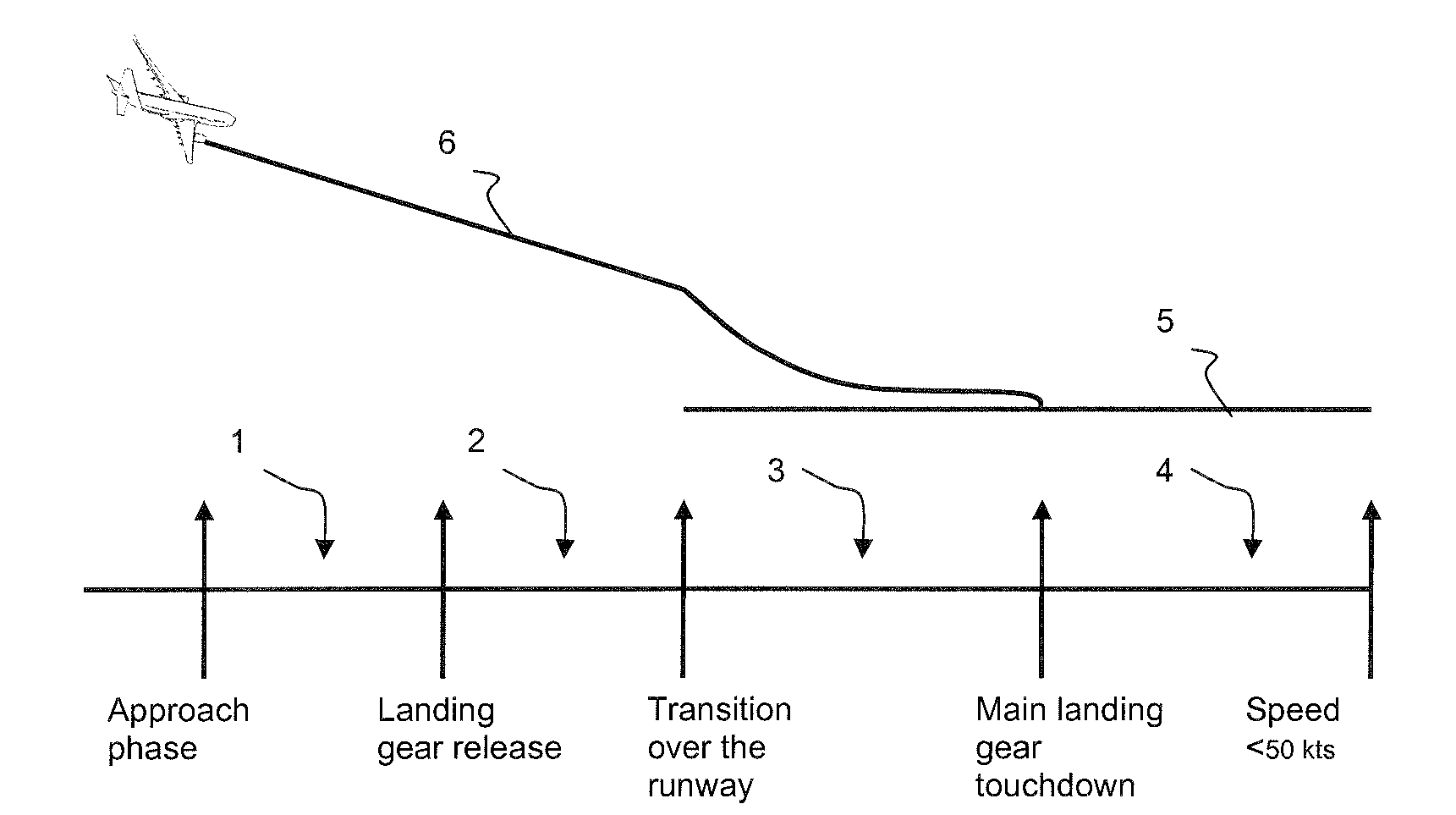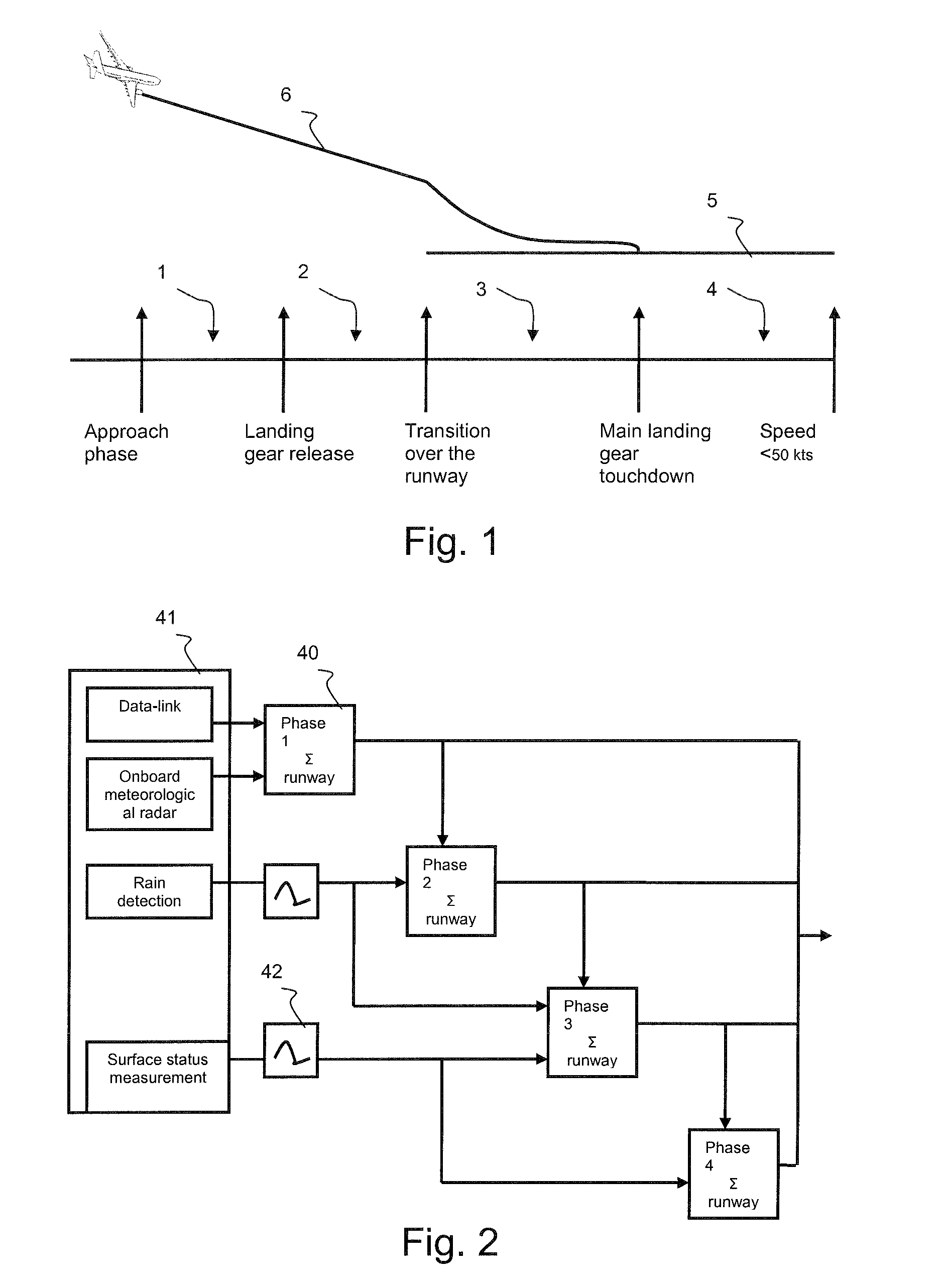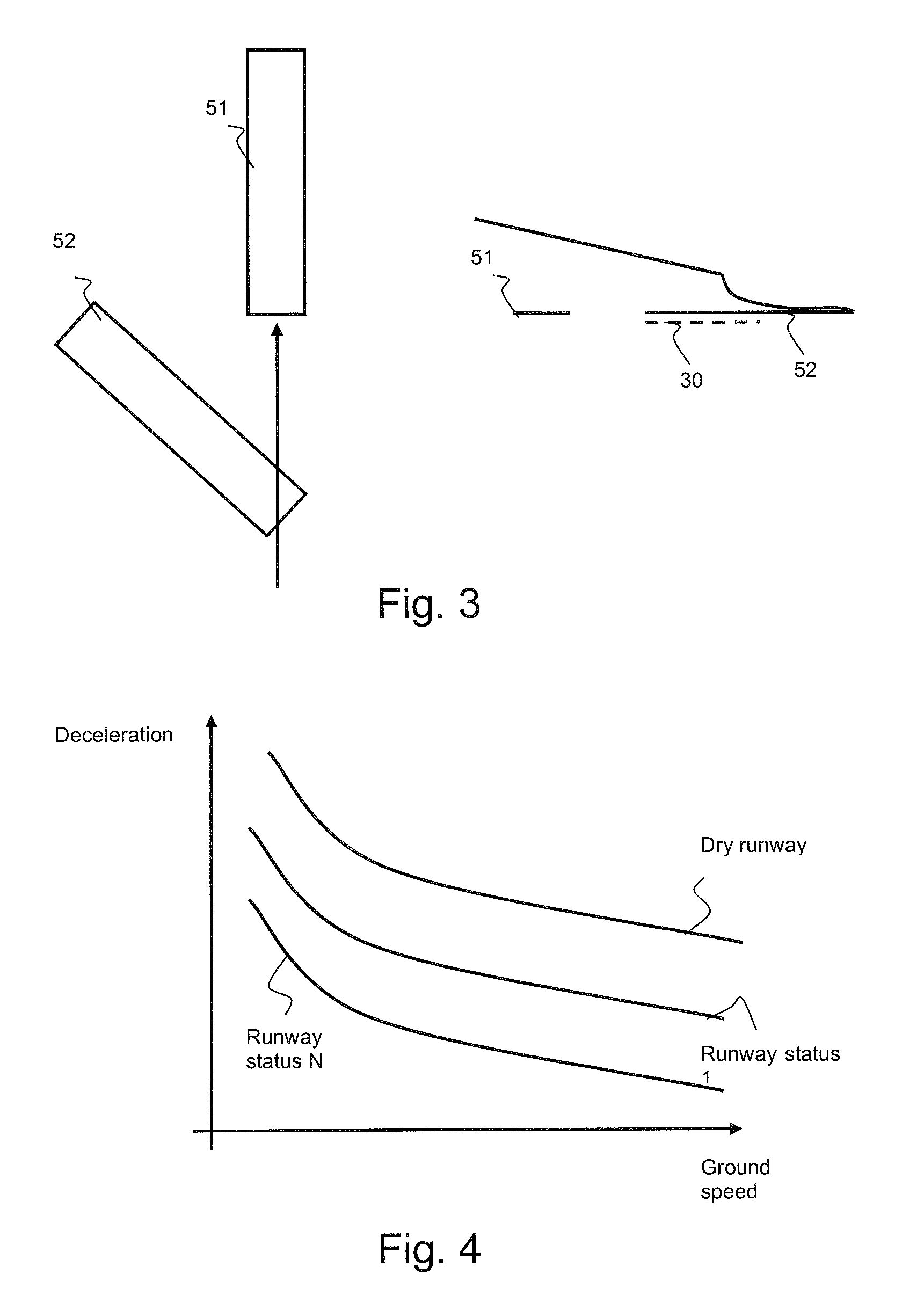Method of Monitoring the Landing Phase of an Aircraft
- Summary
- Abstract
- Description
- Claims
- Application Information
AI Technical Summary
Benefits of technology
Problems solved by technology
Method used
Image
Examples
Embodiment Construction
[0034]The present invention is a method of monitoring the landing phase of an aircraft. Right from the approach phase of the landing, the method assesses a braking distance by taking as input parameters the status of the runway, the flight parameters and the configuration of the aircraft. All of these parameters are taken into account and re-assessed throughout the execution of the landing phase. As the landing phase progresses, the input data are consolidated by additional data sources making it possible to correct and adjust the calculation of the landing distance in order to generate alerts in risky situation cases.
[0035]Implementing the monitoring method involves a number of dedicated calculation functions: a first function for determining the landing runway, a second function for determining the sub-functions that make up the landing phase, a third function for assessing the surface conditions of the landing runway, a fourth function for calculating the landing distance and a f...
PUM
 Login to View More
Login to View More Abstract
Description
Claims
Application Information
 Login to View More
Login to View More - R&D
- Intellectual Property
- Life Sciences
- Materials
- Tech Scout
- Unparalleled Data Quality
- Higher Quality Content
- 60% Fewer Hallucinations
Browse by: Latest US Patents, China's latest patents, Technical Efficacy Thesaurus, Application Domain, Technology Topic, Popular Technical Reports.
© 2025 PatSnap. All rights reserved.Legal|Privacy policy|Modern Slavery Act Transparency Statement|Sitemap|About US| Contact US: help@patsnap.com



